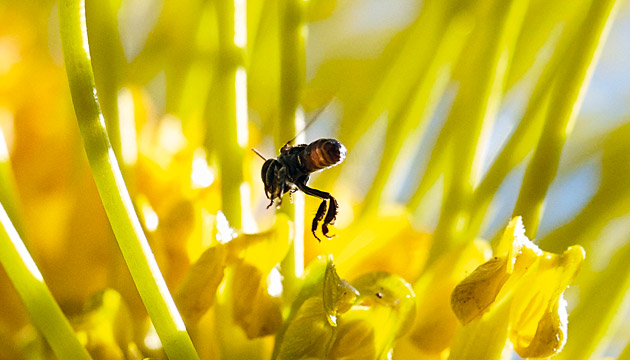Scientists are targeting native stingless bees for tropical pollination.
Story Kerry Sharp Photo Shane Eecen
After a sledgehammer and chisel assault on bricks and mortar, Mark Traynor and Mary Finlay-Doney have hit their latest jackpot. Deep inside a dark brick cavity, horticulturist Mark and entomologist Mary uncover a colony of native stingless bees, and waste no time relocating their intricate hive contents to a wooden box, where they’ll live, work and populate in the name of plant pollination science.
“When we re-house the bees, we place our box at the site of their original natural hive and smear the entrance with a wax and plant mixture called propolis,” Mary says. “The bees soon recognise the pheromones (a chemical substance released by insects and mammals) and swarm around the entrance.”
For the past 12 months, Mark and Mary have been checking all the brick walls at Darwin’s Berrimah Agricultural Research Farm for concealed colonies of Tetragonula mellipes, which they need for tropical horticulture pollination trials. There’s some urgency to their mission because the old structures on the 168-hectare Northern Territory Primary Industry Department facility are being bulldozed to make way for the $1 billion Northcrest housing estate. The department will retain just 6.7ha of the old farm in the middle of 2000 new homes.
“One positive from this development is that we’ve been able to rescue the bees before demolition,” says tropical fruits researcher Mark, who’s worked at Berrimah farm for 30 years. “It’s given us a great nucleus on which to base our research. We’ve collected and re-housed more than 20 hives so far and established an apiary here, which will allow us to propagate more hives over the next couple of years.”
This story excerpt is from Issue #122
Outback Magazine: December/January 2019










